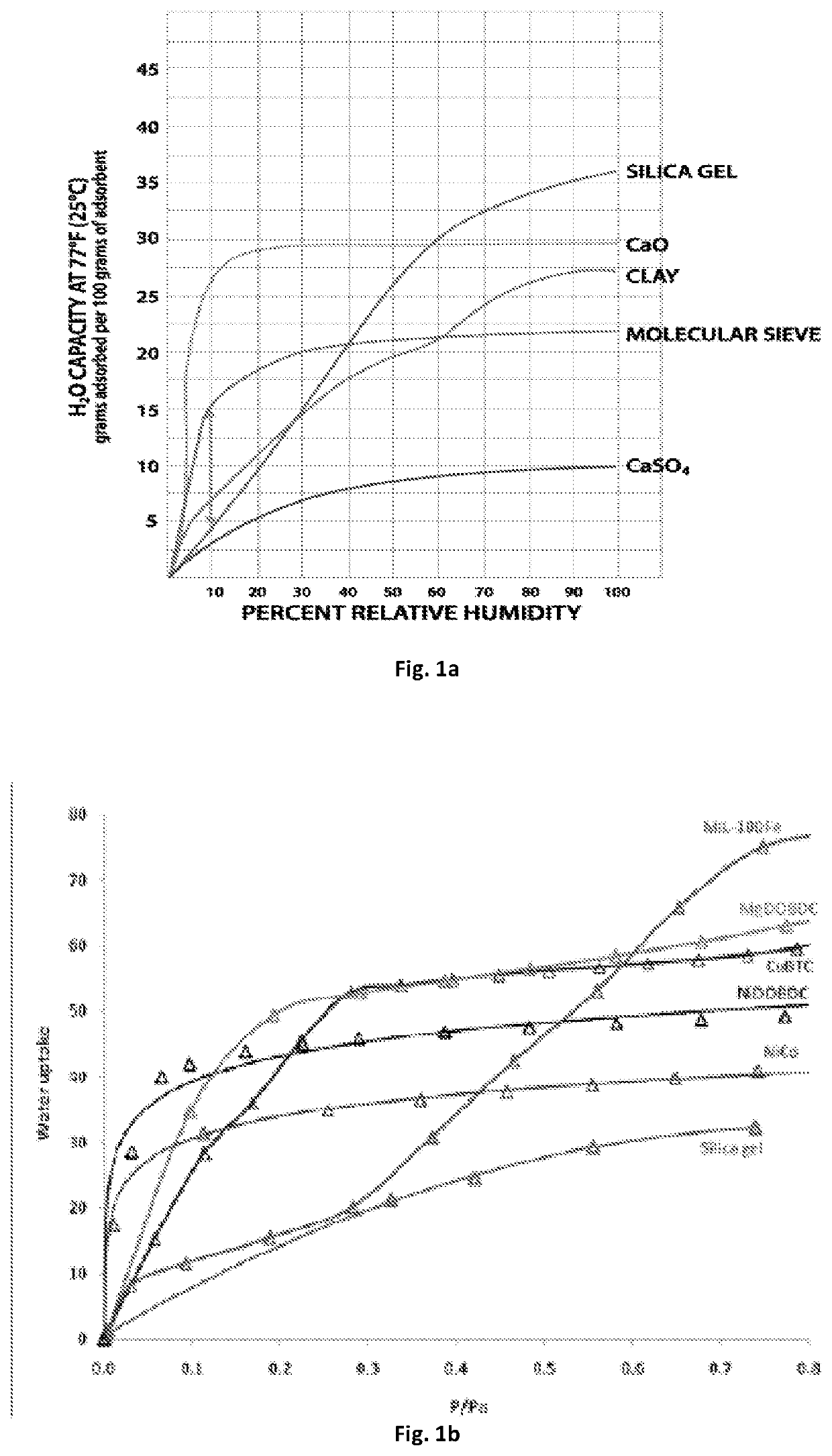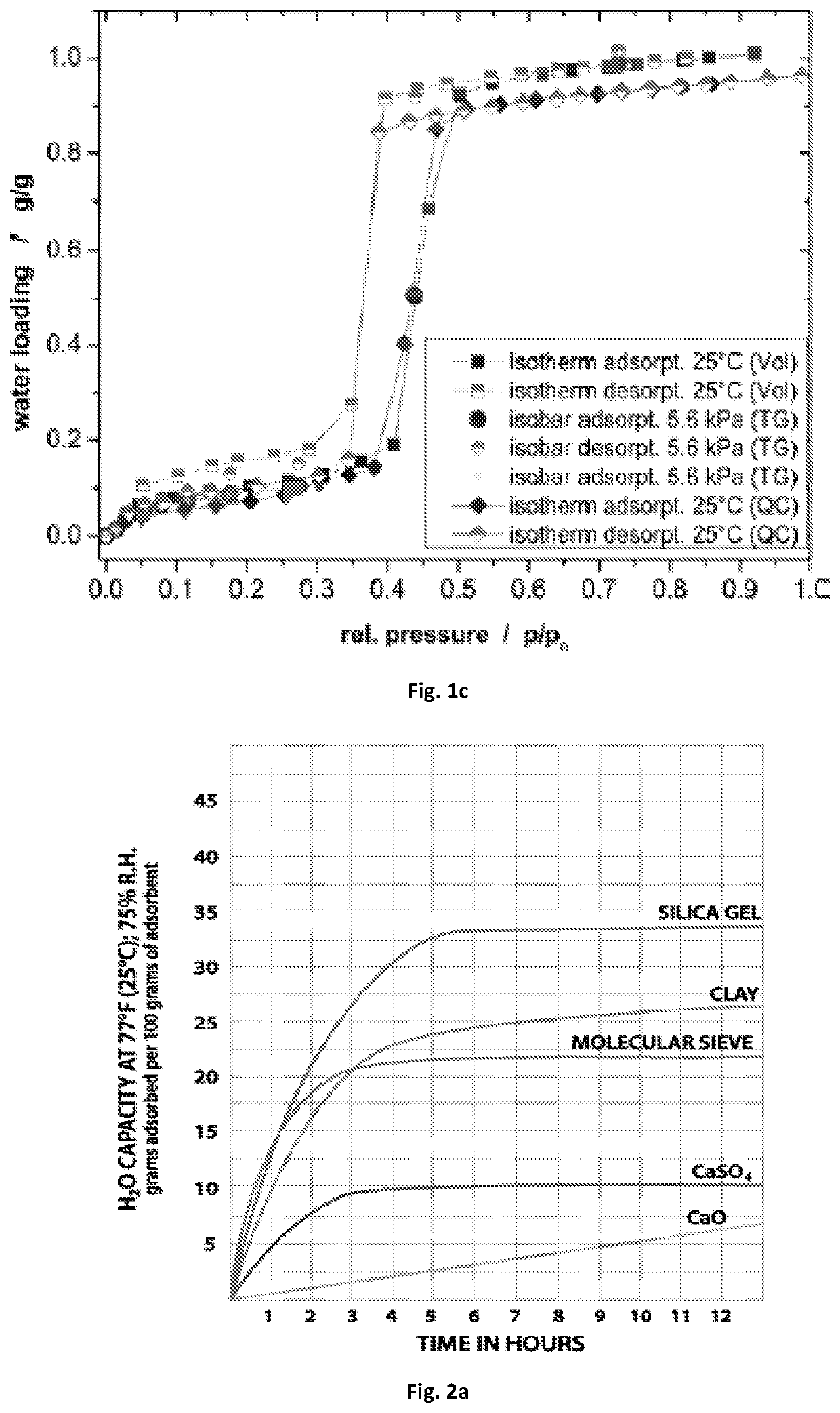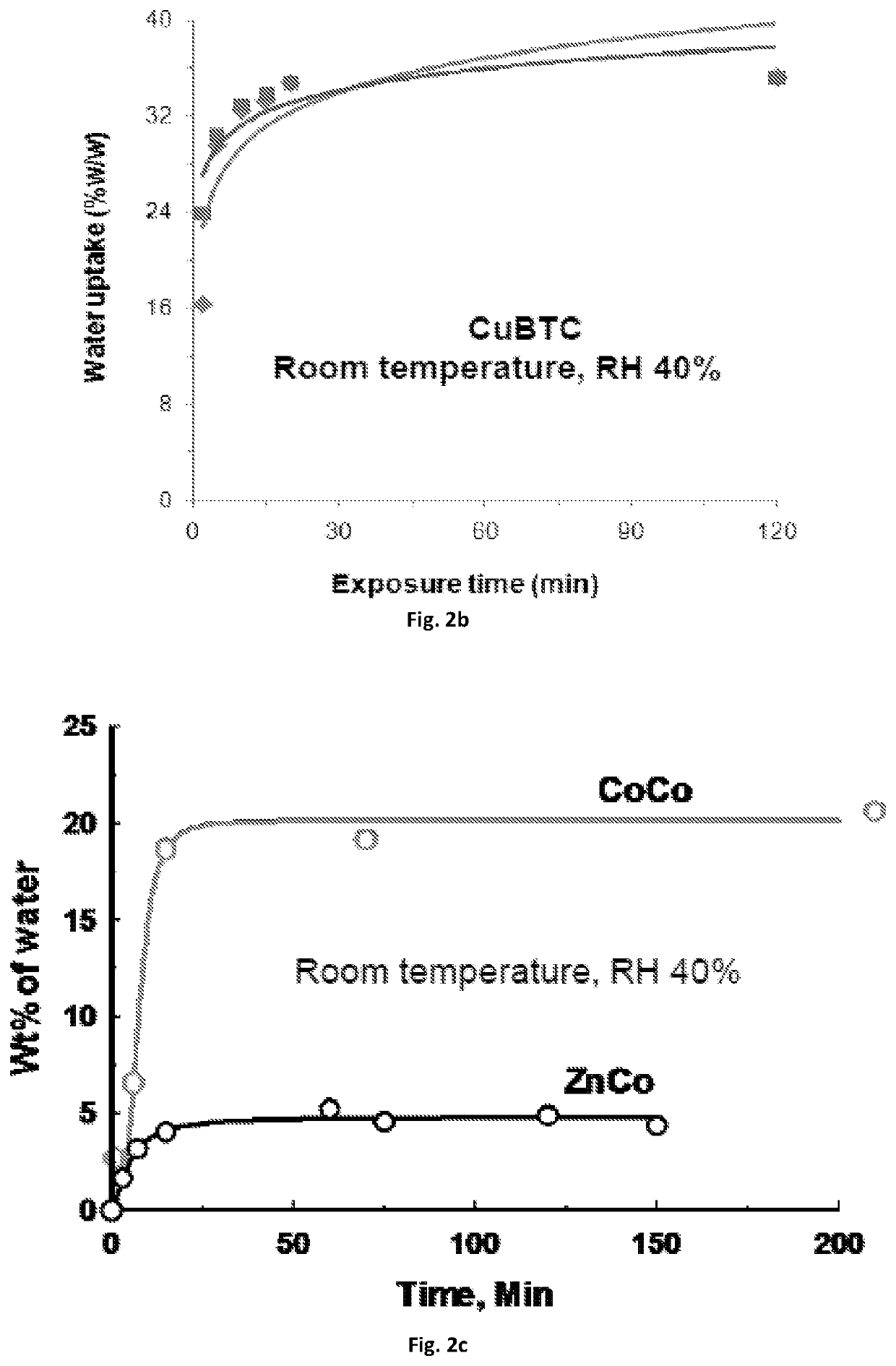METHOD FOR IN-SITU SYNTHESIS OF METAL ORGANIC FRAMEWORKS (MOFs), COVALENT ORGANIC FRAMEWORKS (COFs) AND ZEOLITE IMIDAZOLATE FRAMEWORKS (ZIFs), AND APPLICATIONS THEREOF
a technology zeolite, which is applied in the field of insitu synthesis of metal organic frameworks, covalent organic frameworks (cofs) and zeolite imidazolate frameworks (zifs), and applications thereof. it can solve the problems of limited mofs, limited extension of cofs and zifs, and energy-intensive nature, and achieves reduced desorption temperatures , the effect of reducing the energy required for regeneration
- Summary
- Abstract
- Description
- Claims
- Application Information
AI Technical Summary
Benefits of technology
Problems solved by technology
Method used
Image
Examples
example 1a
ssium Hydroxide without Additive
[0119]Solution A is prepared in three parts by dissolving potassium hydroxide in water, followed by adding fumaric acid under stirring, wherein the ratios of the constituents are different as set out in Table 1a below. Solution B is prepared by dissolving 100 gms of aluminium sulphate in 500 ml of water. The substrate has a basis weight of 33 GSM. Solution B and the substrate are also divided into three separate parts—each to be used with one respective part of solution A. The substrate is soaked in a respective part of Solution A at room temperature and then dried naturally. The dried substrate is then treated with Solution B at a temperature of 80-C and for a time period of 15 minutes to initiate the reaction. After completion of the reaction, the substrate is washed with water to remove any by-products and then subjected to natural drying, followed by activation in a drying chamber. The loading percentage of in situ synthesized MOF (aluminium fumar...
example 1b
ssium Hydroxide with Additive and Increasing the Number of Dippings
[0120]Solution A is prepared as three parts, each by dissolving 120 gms of potassium hydroxide in 450 ml of water followed by addition of 99 gms of fumaric acid under stirring, followed by addition of 2 gm of xanthan gum as additive. Solution B is prepared by dissolving 100 gms of aluminium sulphate in 200 ml of water. The substrate is of 33 GSM basis weight. The substrate parts are subjected to soaking in Solution A parts with different number of dippings (2, 3, and 4 respectively) and with intermediate drying to result in an enhanced loading of component / reactant A, followed by a final drying, before being soaked in the respective part of Solution B to initiate in situ formation of the aluminium fumarate on the substrates. The reaction temperature is 75-C and the reaction time is 30 minutes. The substrates are then each washed to remove by-products followed by natural drying and by activation in a drying chamber. T...
PUM
| Property | Measurement | Unit |
|---|---|---|
| Temperature | aaaaa | aaaaa |
| Temperature | aaaaa | aaaaa |
| Temperature | aaaaa | aaaaa |
Abstract
Description
Claims
Application Information
 Login to View More
Login to View More - R&D
- Intellectual Property
- Life Sciences
- Materials
- Tech Scout
- Unparalleled Data Quality
- Higher Quality Content
- 60% Fewer Hallucinations
Browse by: Latest US Patents, China's latest patents, Technical Efficacy Thesaurus, Application Domain, Technology Topic, Popular Technical Reports.
© 2025 PatSnap. All rights reserved.Legal|Privacy policy|Modern Slavery Act Transparency Statement|Sitemap|About US| Contact US: help@patsnap.com



